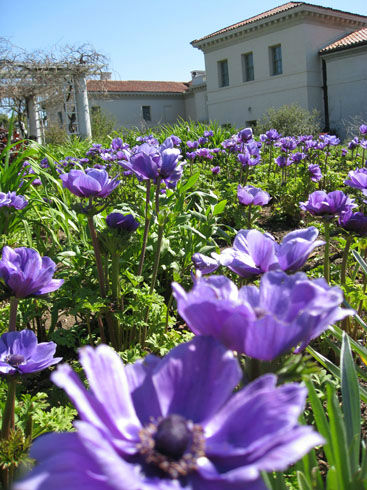![]() 3-21-12 What a Lovely Thing is Spring
3-21-12 What a Lovely Thing is Spring
In this issue:
- March in the Garden
- Spring Garden Planning Workshop
- Gardenerd Tip of the Month: Frost Dates Explained
- Gardenerd Product of the Month: 2012 Spring/Summer Seed Collection
1. March in the Garden
Spring is officially here, and for gardeners, it just keeps getting better. Seeds are started in trays (or the ground in warmer climates), tomato plant sales are cropping up, and flowers are blooming. Life is renewed, and dormant gardeners awaken to the hope of what is to come.
In the Gardenerd Test Garden, we’ve planted out lettuces and cucumbers, basil and bush beans. We’ve transplanted tomatoes and peppers into larger pots, but they’ll spend a little more time under grow lights before moving to the garden. Our early planted radishes are coming along, and we’re desperate to have more kale, so we started some seeds in hopes that our cool summers will save them from an early grave.
Okay, chicken update: Blanche the Barnevelder started laying a few weeks ago, and just last Saturday Biddy the Australorp joined in. Her eggs are small, but she’s laying just about every day. It’s such a strange yet wonderful sensation to walk into the house with an egg in my pocket. Talk about a local meal!
Happy Gardening,
Christy
2. Spring Garden Planning Workshop
Our first Spring Garden Planning Workshops sent a group of gardeners home with a plan for success this spring. There’s still time to join our next class, Saturday, March 31 from 9-11 a.m. Spend this 2-hour class plotting out your garden with expert help. Learn what to grow in spring, where to plant everything, and how to rotate your crops from last year’s layout. Discover more about companion planting and seed storage. Space is limited, so reserve your seat today:
Spring Garden Planning Workshops – 1 class left for spring

3. Gardenerd Tip of the Month – Frost Dates Explained
When you don’t have a frost (like in most of Los Angeles) the concept of frost dates have little or no meaning. For everyone else, it’s life or death in the garden. Knowing your frost dates helps to ensure success this growing season. Here’s a basic primer:
What is frost? A killing frost consists of a drop in temperatures to the point that water freezes. The cells of plants are full of water and when water freezes it expands. When water in cells expands, it ruptures the cell, thus essentially killing the plant.
Last Frost – the day everyone waits for. It’s the reported average date after which a killing frost is not likely to occur. Most seed packets bear instructions saying, “start indoors 6-8 weeks prior to last frost”. That way, plants are ready to go in the ground once threat of frost has passed. Last frost dates usually fall between March and May, but in Southern California, our last frost date is February 11.
First Frost – the day everyone dreads. It means the end of the gardening season for most unprotected gardens. That killing frost comes through and wipes out most plants (some can survive with protective garden fabric covers, and some even thrive after a frost – ie. kale and parsnips become sweeter). Most first frost dates occur between September and November. In SoCal, it’s Dec. 8.
To find your frost dates, type in your zip code at Dave’s Garden to find your specific dates.
So even if you live in a warm climate, canyon and foothill areas are susceptible to frost. Play it safe, know your frost dates.
4. Gardenerd Product of the Month – 2012 Spring/Summer Seed Collection
Are you bored with your usual lettuces and spinach? Try something new and interesting this year with the 2012 spring / Summer Seed Collection. We’ve brought together our favorites like Christmas Lima Beans, Red Malabar Spinach, Romanesco Broccoli, Jaune Flamme and Stupice tomatoes and more. Your garden will come to life with these unusual and beautiful varieties. Find out more about each item here. There’s still time to start from seed!
2012 Spring/Summer Organic Seed Collection
Stay tuned for more tips and tidbits from Gardenerd.com. Happy spring gardening!
